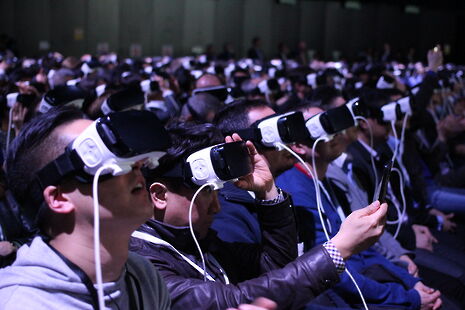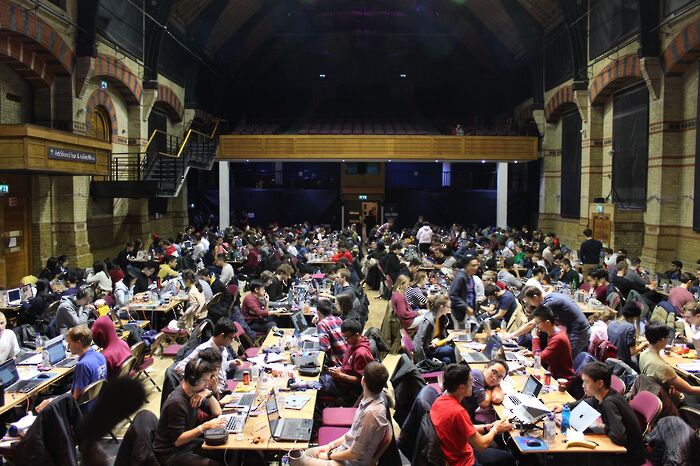Is it time for a VReality Check?
Karoliina Pulkkinen explores the virtual space inhabited by VRChat

In the uncanny valley, realistic becomes borderline creepy. But we have a new valley now. In contrast to their uncanny cousin, the inhabitants of the new geographic formations don’t look eerily familiar. They are anime goddesses, buff eggplants, and warrior pigeons distinctly different from us. But once their 3D modelled mouths open and we hear the sounds of the humans controlling the characters, they strike us as strangely familiar. The angelic cat could be the kid next door, and the skeleton has the same accent as the Finnish exchange student down the hall. For the full experience of this brave new world, you might want to acquire a VR headset. Or, at the very least, search for VRChat on YouTube.
Syrmor, a 22-year-old Canadian YouTuber posts interviews with the quirky avatars in his channel “Humans of VR.” (Syrmor’s takes are not dissimilar to the heartfelt stories in Brandon Stanton’s Humans of New York). In one viral video, Syrmor interviews Bugs Bunny, whose mother was addicted to methamphetamine. Then there is the 8-year old Jordan, who is “a little too evil for VRChat” and takes a break from gameplay to describe to his mom what kind of pizza he would like her to order for him.
"The presence of a human voice seems to tone down the nastiness found in many other corners of the internet"
At times, you can hear how the headset mic catches dogs barking in the background. Perhaps the most memorable interruption comes from a father who took over his son’s description of living with a rare genetic disorder. As Syrmor reports for Kotaku, an online gaming magazine, “Having this very burly, 40-year-old male voice coming through Piglet in virtual reality, talking about his son’s disease . . . was just not something I ever expected to encounter in video games.”
The locus of the interviews is VRChat, a massive multiplayer chatroom that bears a distant resemblance to SecondLife and HabboHotel. Its developers describe it as a community that brings together people from all around the world. Judging by the videos made by its users, it is easy to see why the optimists might say that the platform effectively does succeed at achieving that goal; the clunky 3D art conceals geographic and socioeconomic factors that can stop people from coming together in day-to-day life.
The pessimists, meanwhile, would be quick to note that VRChat does not conceal everything. There remains the difference between native English speakers and non-native ones. The more female-sounding voices are still distinctly female, and scarcer than the male ones. But after seeing the interactions documented in Syrmor’s videos, even these pessimists should appreciate VRChat’s potential at moving towards the goal envisaged by the platform’s developers.
In her book It’s Complicated: The Social Lives of Networked Teens, danah boyd (styled lowercase) brings attention to the early expectations of the equalizing effect of internet. Boyd, who is a renowned scholar studying the intersection between tech and society, effectively shows that this turned out to be an empty promise. Instead of social media platforms concealing the factors that contributed to inequalities in the lives of the American teenagers interviewed by boyd, they replicated the structures prevalent in the lives of teenagers outside the screen.
While it is likely that VRChat will follow the suit of other platforms in recreating the unequal structures of the more mundane reality, crucially, the presence of a human voice seems to tone down the nastiness found in many other corners of the internet. When a user was having a seizure, concerned bystanders gathered around him, advising him to drink water and contact medical professionals. When one of them started making fun of the victim, another responded: “The entire community is coming together for the betterment of this person. Don’t be that one guy.”
 Comment / Plastic pubs: the problem with Cambridge alehouses 5 January 2026
Comment / Plastic pubs: the problem with Cambridge alehouses 5 January 2026 News / Cambridge academics stand out in King’s 2026 Honours List2 January 2026
News / Cambridge academics stand out in King’s 2026 Honours List2 January 2026 News / Cambridge businesses concerned infrastructure delays will hurt growth5 January 2026
News / Cambridge businesses concerned infrastructure delays will hurt growth5 January 2026 News / AstraZeneca sues for £32 million over faulty construction at Cambridge Campus31 December 2025
News / AstraZeneca sues for £32 million over faulty construction at Cambridge Campus31 December 2025 Interviews / You don’t need to peak at Cambridge, says Robin Harding31 December 2025
Interviews / You don’t need to peak at Cambridge, says Robin Harding31 December 2025









